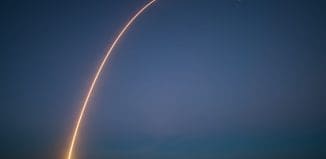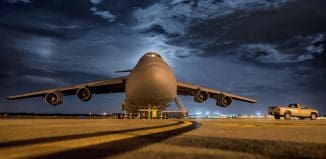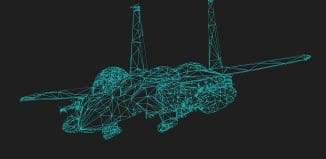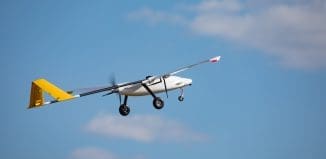Special Report: Solar HALE Drones Turn into Atmospheric Satellites
This post is also available in:  עברית (Hebrew)
עברית (Hebrew)
Mega-size solar power drones are taking shape at several manufacturers across the USA, where ‘atmospheric satellites’ are being developed, designed to take small payloads into ‘atmospheric orbit’ at 65,000 ft on missions that could last five years.

One of the largest solar powered drones, known as ‘SolarEagle’ is under development at Boeing Phantom Works, under DARPA’s $89 million Vulture II program. This ultra high-altitude, long-endurance (HALE) platform will be capable of flying missions lasting between three months and five years. This drone’s 400-foot span wings will carry solar panel arrays that will be able to sustain the drone aloft in the stratosphere for at least five years. Key suppliers for that program include Versa Power Systems and QinetiQ.
The solar-electric-powered aircraft will be able to cruise at altitudes above 60,000 feet at a speed of 70 to 80 knots while performing communications, intelligence, surveillance and reconnaissance missions.
During the day, the solar power generation is used to power the aircraft and excess solar power generation is converted to hydrogen by the fuel cells as they operate in electrolysis mode. At night, the fuel cells run in fuel cell mode, converting the stored hydrogen to power. Solid Oxide Fuel Cell (SOFC) based energy storage systems have the potential to provide unprecedented round trip energy efficiency as the storage application of the technology is further developed.

The aircraft will have solar arrays attached to its plastic skin, that cover more than 50 percent of its surface. Highly efficient electrical motors and propellers and a high aspect-ratio wing, similar to those used in gliders, will also contribute for increased solar power and improved aerodynamic performance. Similar to satellites, the platform will be designed to be a “zero-maintenance, launch-and-leave” UAV, Boeing’s Pat O’Neil said.
In fact, the aircraft will offer many of capabilities currently provided by orbiting satellites, at a higher degree of flexibility and a lower cost, making such ‘atmospheric satellites’ useful for intelligence gathering, communications and commercial applications. The SolarEagle will be able to carry payloads of up to 1,000 pounds of weight.
Under the original plan Boeing was planning to test a scale-down proof of concept platform sometime in 2014, to demonstrate continuous operation on a 30-90 day mission. However, following the Preliminary Design Review, the program was restructured by DARPA, and is now refocusing on advancing critical energy management technologies – solar collection (photovoltaic) and fuel cells (energy storage systems). According to DARPA, these technologies are the least mature and are vital for enabling ultra-persistent high-altitude, long-endurance (HALE) flights lasting multiple years. By narrowing the program’s focus, DARPA seeks to advance energy management technologies that would benefit a number of future HALE aircraft applications and should reduce risk for development of future very long-endurance aircraft programs.
DARPA still considers the Vulture long endurance attributes as essential for future ISR missions. It’s advanced energy storage system technologies ultimately could enable a re-taskable, persistent pseudo-satellite capability in an aircraft package.
In addition to the Solar Eagle, Boeing is also pursuing the hydrogen-powered ‘Phantom Eye’ HALE platform, designed to stay aloft for up to four days. Phantom Eye made its maiden flight in 2011, a second flight followed in 2013.
A newcomer to this exciting field is Titan Aerospace, developing a commercial based ‘atmospheric satellite’ service that promises to ‘revolutionize near-earth applications for dozens of industries’. “The ability to park a stationary payload directly above a specific point is opening dramatic new possibilities and redefining the landscape.” Titan’s Chief Technology Officer Maximus Yaney said.
A typical launch sequence will begin just after midnight as the aircraft climbs under its own battery power, to an altitude where the drone reaches obtains the first rays of light as the sun crests over the horizon and enters its standard day-night cycle. As the sun sets, the SOLARA shifts its propulsion, payload, and systems to its battery banks. The precision Battery Management System ensures voltage and thermal thresholds are maintained in the subzero atmosphere. At an altitude of 65,000 ft (about 20 km), SOLARA remains above terrestrial weather where it can remain on station for years. The drone will use silicon-based solar arrays.
 According to Titan Aerospace, the platform maintains efficient energy harvesting even when the sun is low on the horizon, employing its high efficiency solar array. To further conserve energy, the platforms use a distributed Maximum Point Power Tracking system, dynamically maintaining optimal voltage across the entire array at various solar insolation and incidence levels.
According to Titan Aerospace, the platform maintains efficient energy harvesting even when the sun is low on the horizon, employing its high efficiency solar array. To further conserve energy, the platforms use a distributed Maximum Point Power Tracking system, dynamically maintaining optimal voltage across the entire array at various solar insolation and incidence levels.
The solar array generates a tremendous amount of nonpolluting energy, enough to power propulsion and systems, charge batteries, and supply payload with kilowatts of energy in peak periods and hundreds of watts throughout the night.
The company is building two versions of this solar-powered platform. SOLARA 50 will have a gross weight of 350 pounds (159 kg) carrying a payload of over 70 pounds (+32 kg) with a 50 meter wingspan. The larger SOLARA 60 will be able to carry twice the payload with a 60 m’, nearly 200 foot (60 m’) wing. The 54 foot (15.5m) long drone will soar on wings that will span over 164 feet (50 meters), cruising at a speed of 56 Knots (104 km) at an altitude of 65,000 ft (+20 km). It will be designed to remain on station for five years, thus covering almost 2.5 million nautical miles (over 4.5 million km) on a mission.
Source: Defense Update





























